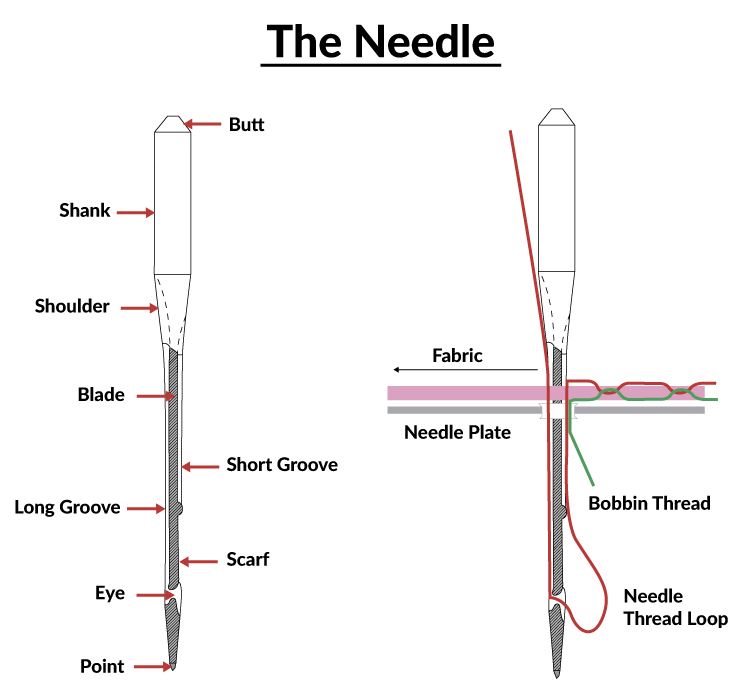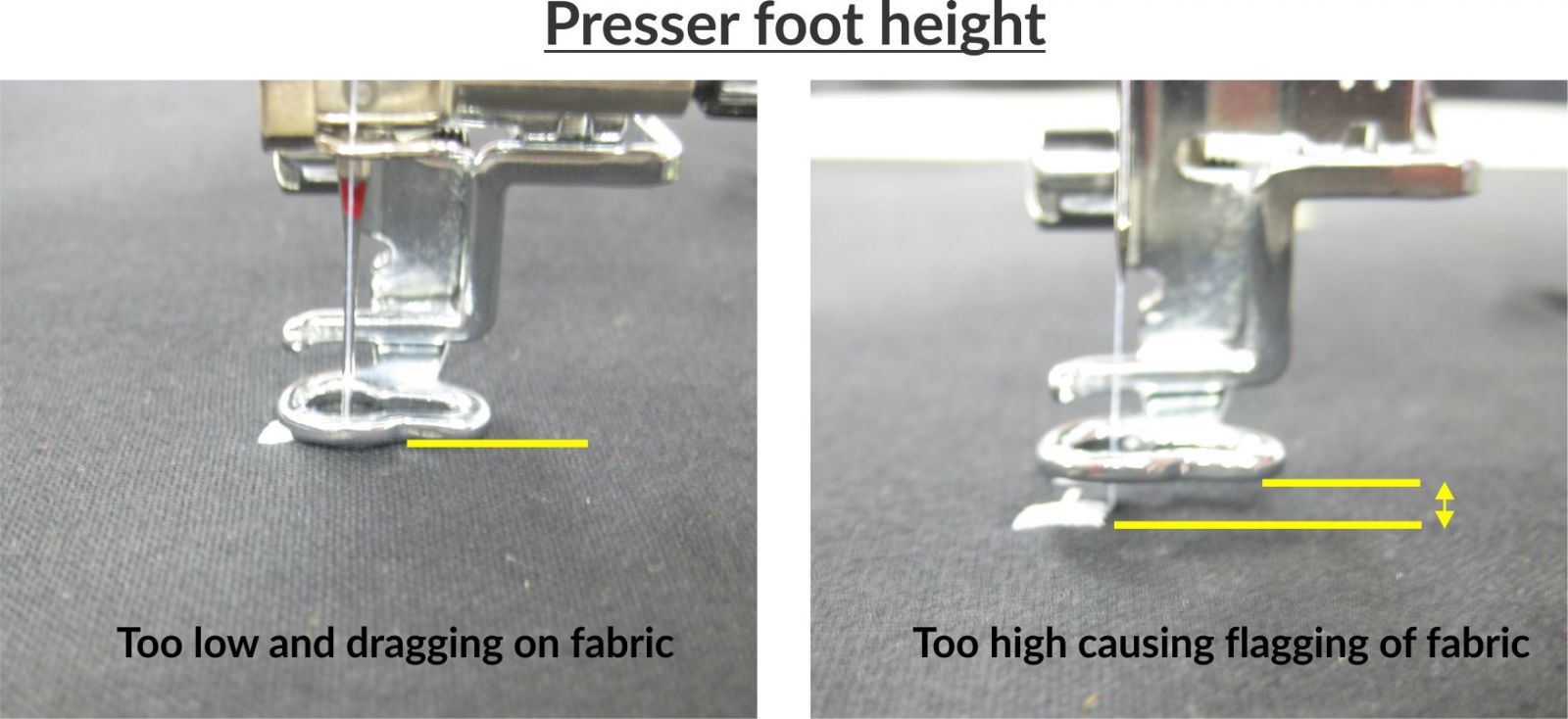Why does thread break?
Date Posted:1 July 2019
It helps if you first understand how it works!
No one enjoys dealing with thread breaks and often the embroidery thread itself is unfairly blamed. Granted there are some cheap and nasty threads available, but there are also a host of excellent brands like Hemingworth, which of course has the benefit of the exclusive spool and cap system.
So why does thread break?
The process of forming a stitch is quite complex. In fact, it’s a miracle that sewing machines can create a stitch at all with so many things having to work in perfect harmony for every stitch to be a successful one. I think it’s easier to work out why thread breaks if you first understand how a stitch is formed.
A sewing or embroidery machine forms what is called a lock stitch consisting of an upper needle and lower bobbin thread, which are locked together during the stitching process. The needle thread is delivered as a continuous thread, whereas the bobbin thread is wound onto smaller bobbins. People often ask why it can’t be two continuous threads but the fact is, to form a lockstitch one thread has to be completely enveloped by the other, hence the need for a bobbin.
So let’s follow the formation of a lock stitch. Imagine the needle is threaded and in the up position with the take-up lever also in the up position. The bobbin is loaded and there is also fabric under the foot.

- The needle starts to move downwards piercing the fabric on the way. At the same time the take-up lever also starts to descend, creating slack in the needle thread to assist in forming the stitch.
- The needle continues downwards until it reaches the very bottom of its stroke. As it then begins to rise, the slack needle thread starts to form a small loop behind the needle eye, under the needle plate. The pinching effect of the fabric and the structure around the needle eye assist with this step.
- As the thread loop forms a rotary hook (sometimes referred to as the shuttle point) intersects with the back of the needle, just above the needle eye, at the point called the needle scarf. If the hook point does not enter the thread loop, a missed or slipped stitch will occur. Multiple consecutive missed stitches will usually result in thread shredding.
- After entering and catching the thread, the hook (or shuttle) continues its rotating movement. It then carries the still slack needle thread around the bobbin, which is housed in the bobbin case (holder), and completely envelopes the bobbin thread.
- At about halfway through its rotation, the hook/shuttle will release the slack thread and the needle thread take-up lever will begin to rise from its lowest point. It will start taking up the slack thread that was needed to envelop the bobbin thread.
- The take-up-lever will continue upwards, removing the slack thread. At this point the thread tension device comes into play by applying enough tension to the thread. This allows the take-up lever to pull the thread and set the stitch firmly to the fabric without pulling excess needle thread from the thread spool.
This whole intricate process repeats for each and every stitch. You might be surprised at the length of thread required to produce a single 2mm long stitch. This will pass through the needle-eye, at speed, about 45 times before it’s sewn into the fabric. As you can imagine, creating a stitch is a complex process and there is a lot of stress on the thread. Everything has to work in perfect synchronization and if it doesn’t, the thread will break or shred. Let’s look at a list of things you can remedy yourself if you are having thread breakage issues:
Typical causes of thread breaks or shredding
- Needle too small - means a smaller eye and causes stress on the thread. Remember how many times the thread passes through the needle. Choose the correct size needle for the thread you’re using.
- Wrong needle type - an embroidery needle has a slightly larger eye than most needle styles which allows for better loop formation and accommodates the thread more efficiently without relying on a larger needle diameter.
- Damaged or worn needle eye - Needles do wear out and particularly when using metallic or abrasive threads. This will stress the thread.
- Damaged needle hole on needle plate - This can be abrasive on the thread and usually is the result of needle breakages. A damaged plate can usually be ground and polished by a technician. If you do it yourself, don’t make the needle hole too big.
- Damaged bobbin case or shuttle hook - will catch or snag the thread. Again often caused by needle breakage or incorrect insertion of the bobbin case. Normally this would require a new bobbin case so always have a second or spare bobbin case on hand.
- Incorrect threading or thread path obstruction - a very common user error, especially a failure to ensure thread is in the Take-up lever correctly.
- Tension too tight - causes stress on the thread and is often due to an individual thread spool or colour that is simply pulling too tight. Some colour dyes do affect the tension. You can lower the needle tension.
- Tension too loose - creates excess thread, which can cause the thread loop to collapse or not form correctly resulting in missed stitches. Tighten the needle tension.
- Thread could have dried out - most good thread is lubricated with silicone during production. This can dry out and cause thread shredding and or tight tensions. Simply spray the thread with pure silicone spray and leave it for a hour (or overnight). This will usually bring dry thread back to life.
- Designs that are too dense - will cause stress on the thread or will deflect, bend or even break the needle. It can also stop the thread loop from forming, causing missed stitches. Use a different design or filter the design using Embrilliance Density Repair Kit.
- Fabric Flagging - often caused by incorrect or no backing, incorrect presser foot height, bad hooping, hoop vibration, dense designs or a damaged needle. This is the most common reason for thread shredding.






